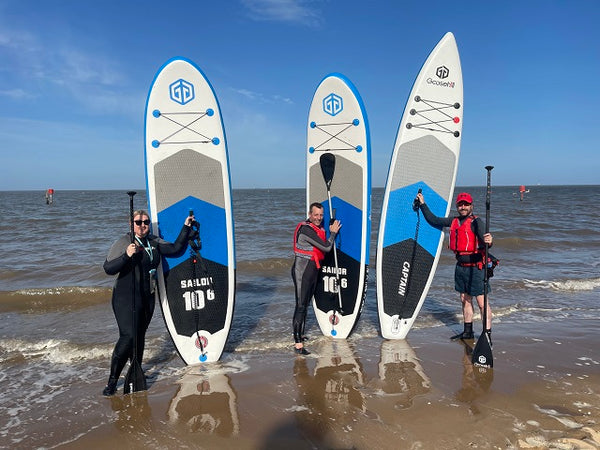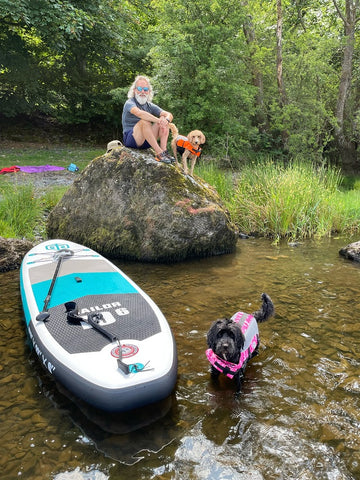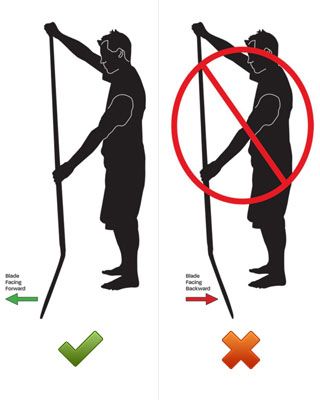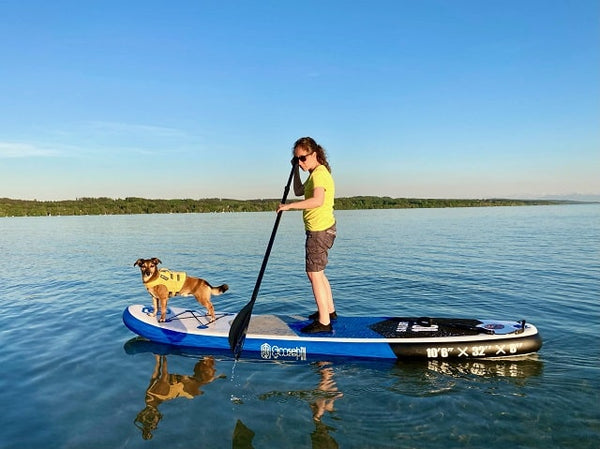Things Not to Do with a SUP Board - Beginner Paddle Boarding Tips
You can do a lot of things with an inflatable paddle board. You can take it out for cruising, yoga, fishing and more. But there are a few things you should know if you just start to learn how to paddle board. Below are several common mistakes found frequently in beginners. Try and avoid them next time you get out on the water.
Things You Shouldn't Do With Your Paddleboard - Beginner Paddle Boarding Tips
- Not wearing a leash or lifejacket
Wearing a life jacket or the SUP leash is like buckling up your seatbelt, it’s to ensure your safety on the water. If you just start to learn how to paddle board and are not wearing a life jacket and/or SUP leash, people are going to judge you. It’s strongly recommended to wear a life jacket and a SUP leash, even if you are a good swimmer. It’s not uncommon for a confident swimmer to go into some medical distress and drown because he/she has chosen not to wear a buoyancy aid.

A SUP leash is also a must because if you fall, your board can float away and possibly crash into another person and the leash will prevent the board from getting away from you. Stay safe and then have fun.
- Launching your board in shallow water
Launching your board in shallow water is dangerous for you and your board. There’s a high chance your fin will hit the bottom and crack, further causing you to lose balance and fall. So take your time and walk your board out far enough to clear the fin. If you don’t want to walk too long or get wet, try to find a dock or ledge in the water to launch your board. If shallow water is the only choice you have for launching your board, try pointing your board backwards so that the fin will be in the deeper water and it will lower the odds of the fin hitting the bottom. But by doing this you will have to mount from the nose and scoot your body back to the center, you might need to practice it to do it more smoothly and safely.

- Holding the paddle the wrong way
One common rookie mistake is holding the paddle with the blade tilted back towards the paddler. By holding the paddle this way the paddler is basically digging into the water, pulling themselves down. The right way to hold the paddle is to keep the blade tip up so that you can push yourself forward through the water when you perform a stroke.
But it’s understandable to hold the paddle wrong because the right way might seem a little counter intuitive.
Just remember to keep your tip up. Hold the paddle with one hand on the top grip and the other hand on the shaft. To see if you’ve had your hands spread the right distance, hold the paddle above your head. If your elbows are bent 90 degrees, then you know you are holding it right.

- Paddling with just your arms
If you want to paddle more efficiently, you can’t just use your arms for each stroke. You need to know how to properly engage your core in every stroke. Plant the whole blade in the water and start pushing down with your top hand. When paddling forward, think of it as moving your feet forward. It’s like pulling your feet and your body forward and towards the paddle. Engaging your core is the key to a powerful stroke. Always use your core to move your board. Check out our guide on how to engage your core when paddle boarding.

- Standing in the wrong position
Standing in the wrong position can ruin your paddling experience. Most boards are designed with a nice rocker to the nose to achieve excellent glide performance and perfectly balanced with the handle in the weight center to make it easy to carry and show you where to stand. If you stand too far forward your rocker will dip into the water too much and won’t be able to reduce drag as you glide over the water. Too far back and your tail will sink and slow you down as it creates more drag. The most ideal position to stand is with your feet on either side of the handle, shoulder-width apart.
- Looking down and not at the horizon
When you are riding on a paddle board, chances are you will go in the direction that you are looking. So don’t look down when you paddle, as you will likely fall if you keep staring down at the water. To better maintain your balance, keep your eyes up at the horizon and you will have better spatial awareness and reaction time. Also, by keeping your eyes looking forward, you can be aware of what’s going on around you, like potential dangers, boats, boat wakes, waves, crocodiles, dolphins and other wildlife.

- Paddling on a windy day to start
Even an experienced paddler would feel uncomfortable paddling in strong wind. So it’s advised not to go out in over 5 knots(5.7 M/hr or 10 km/hr) if you are just learning how to paddle board. For a beginner, even a breeze can take you downwind and blow you off course. You might end up in the middle of a lake struggling to get back to home base. This is probably not the kind of story you would want to share with other people. What you should do is take heed of the wind direction and head into it for your exploration so when you return, it will be easy and smooth.
- Not checking weather condition and tide
This is an important step to ensure your own safety so you probably shouldn’t skip it. You don’t want to be caught in something you are not preapred for. Alwaya check the local weather before actually going out. There are a lot of apps you can use to check weather conditions, tides and currents. If you have any doubt about the weather, just don’t go out. If you really want to go out, try and find experienced locals and ask for their advice.
There are a lot of conditions that are dangerous. For instance, the tidal exchange in some narrow passages can make calm water become strong current that can sweep you away in a matter of minutes. There can be strong wind coming out of nowhere on a lake that can pull you out away from shore. If you lose track of time, you can end up paddling in the dark with no light because the sun can set very fast in the autumn. So be sure to do your research and be prepared for any potentially dangerous conditions.
- Dragging your board on land
It’s understandable you would want to drag your board because a paddle board can be pretty heavy, especially hardboards. But you will surely damage your board by doing so. Even the more durable inflatables won’t be able to withstand you dragging them on land. If you drag a fiberglass board, it will definitely scratch the high gloss finish and potentially crack the fiberglass. An inflatable board is more durable but damages are still inevitable.

Try asking for help instead of dragging the board. If you can’t find help, get one of those carts for transporting paddle boards.
If you’ve decided to start paddle boarding, you’ve taken the first step toward a more healthy and enjoyable life, good for you. And by knowing these beginner paddle boarding tips, you should be able to master the craft and really enjoy the sport in no time.










